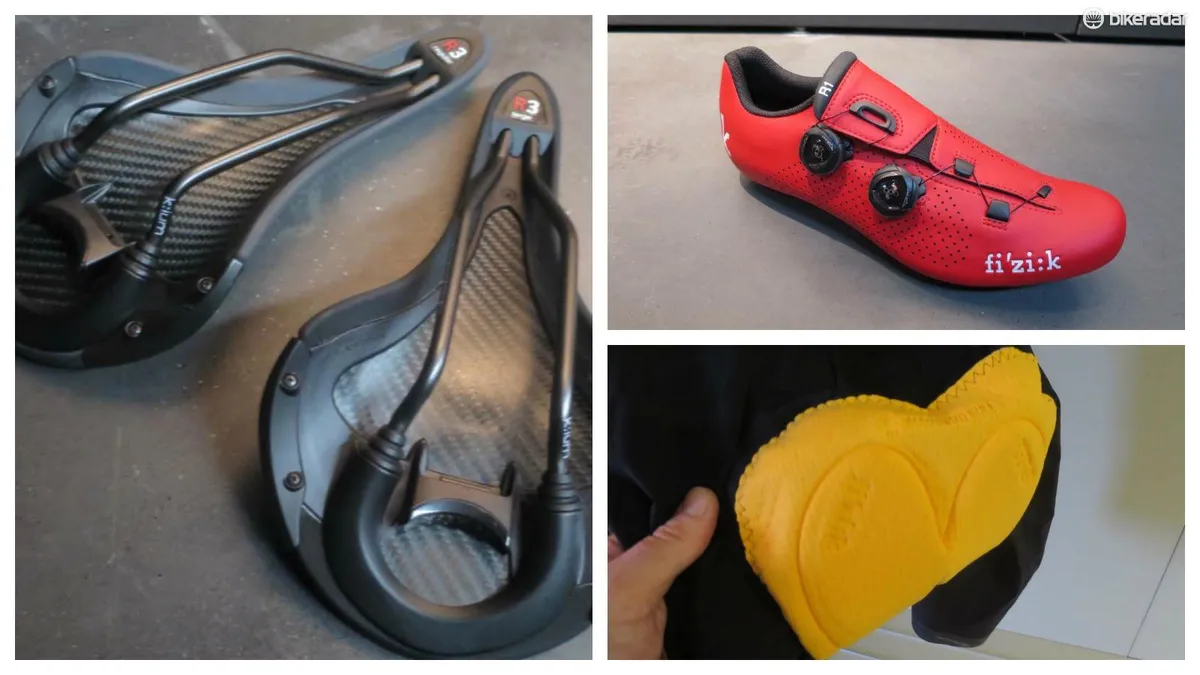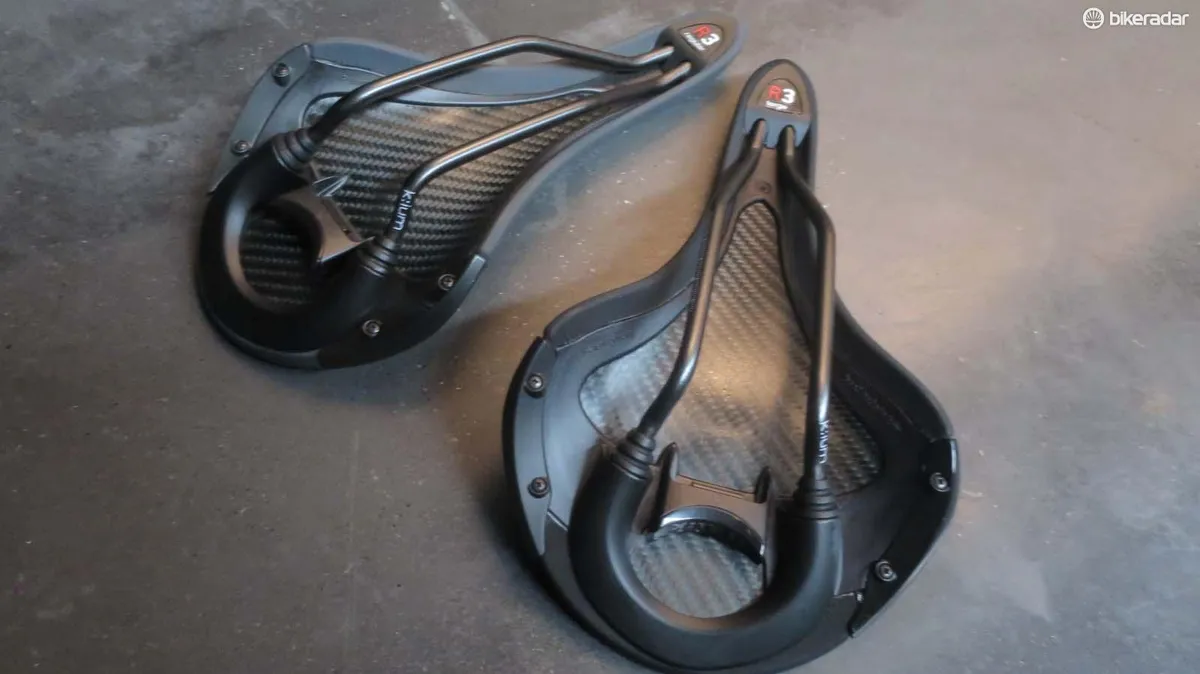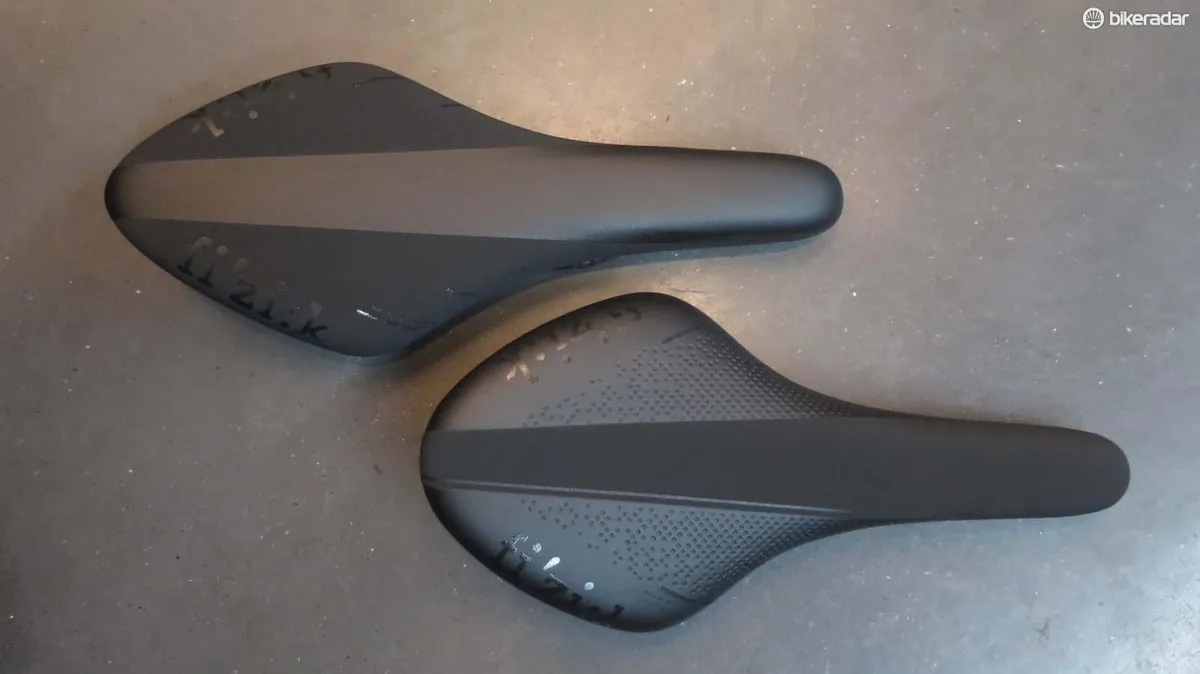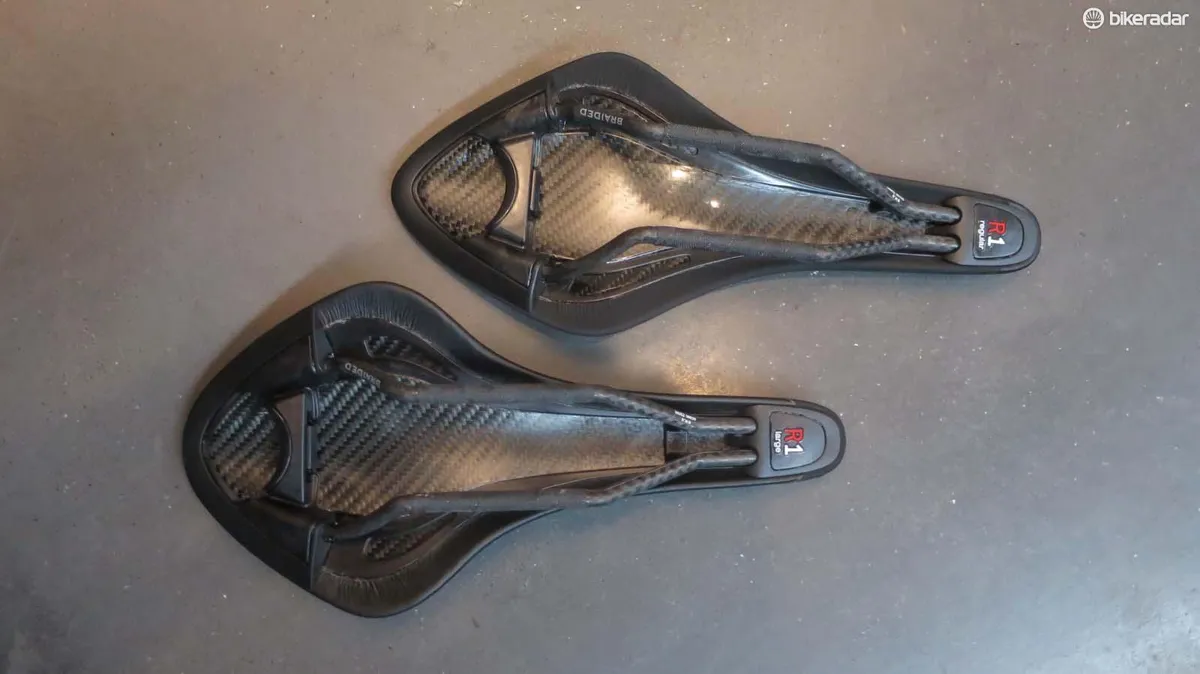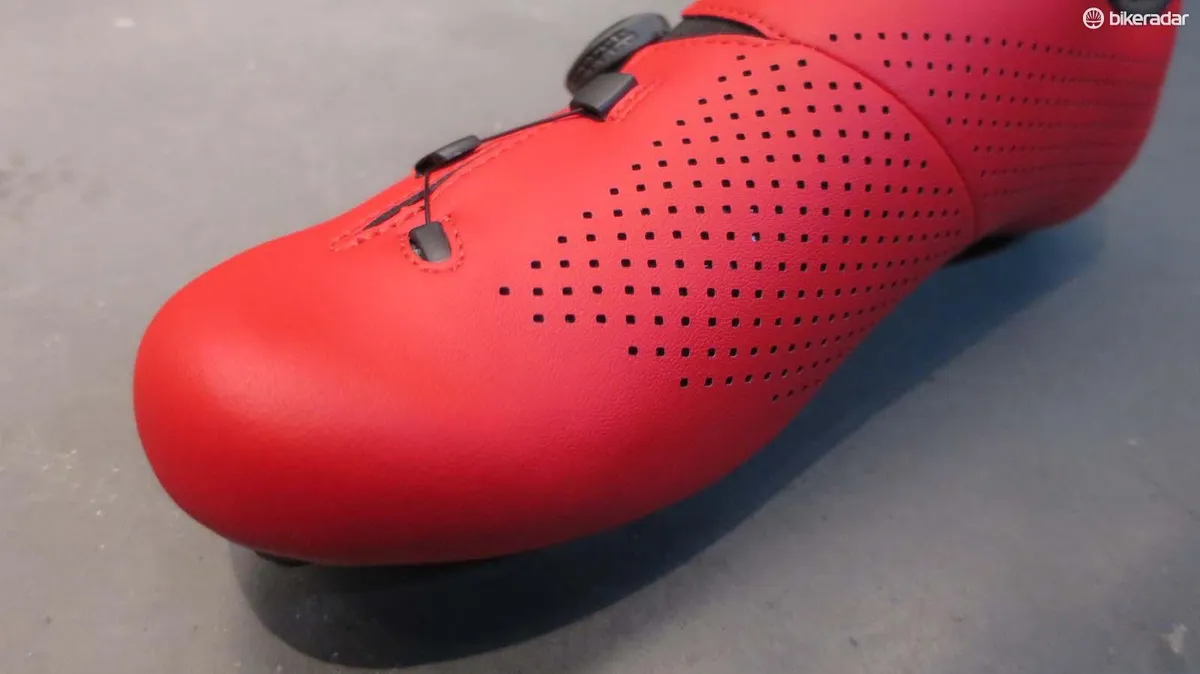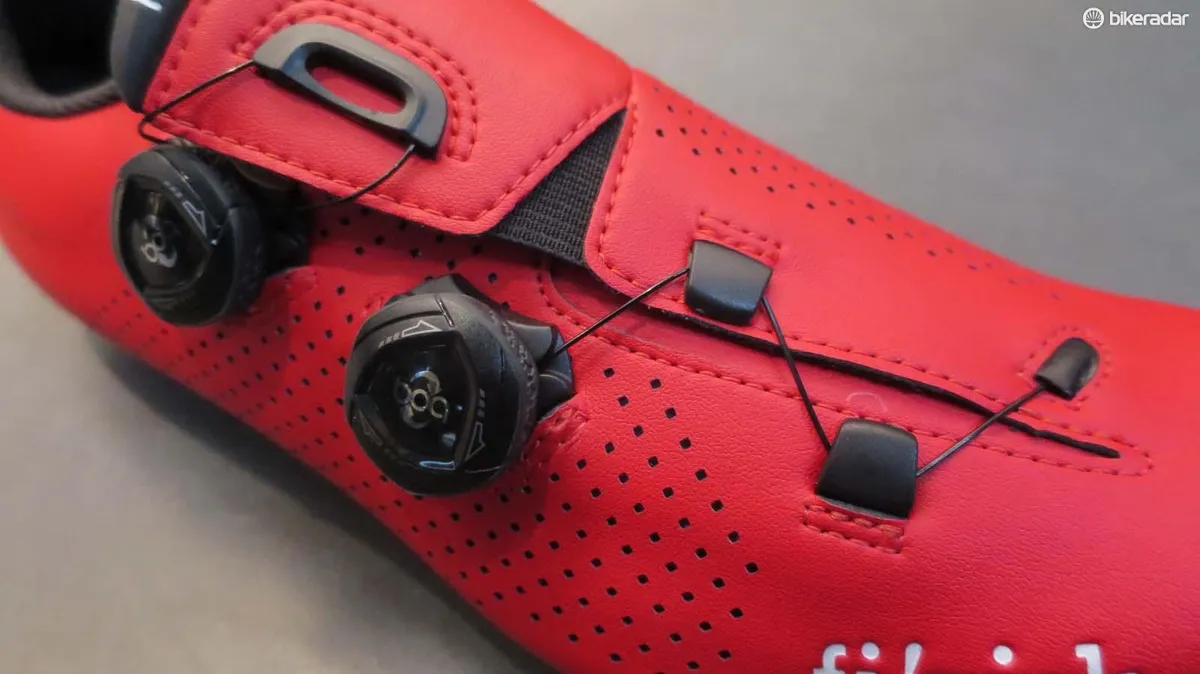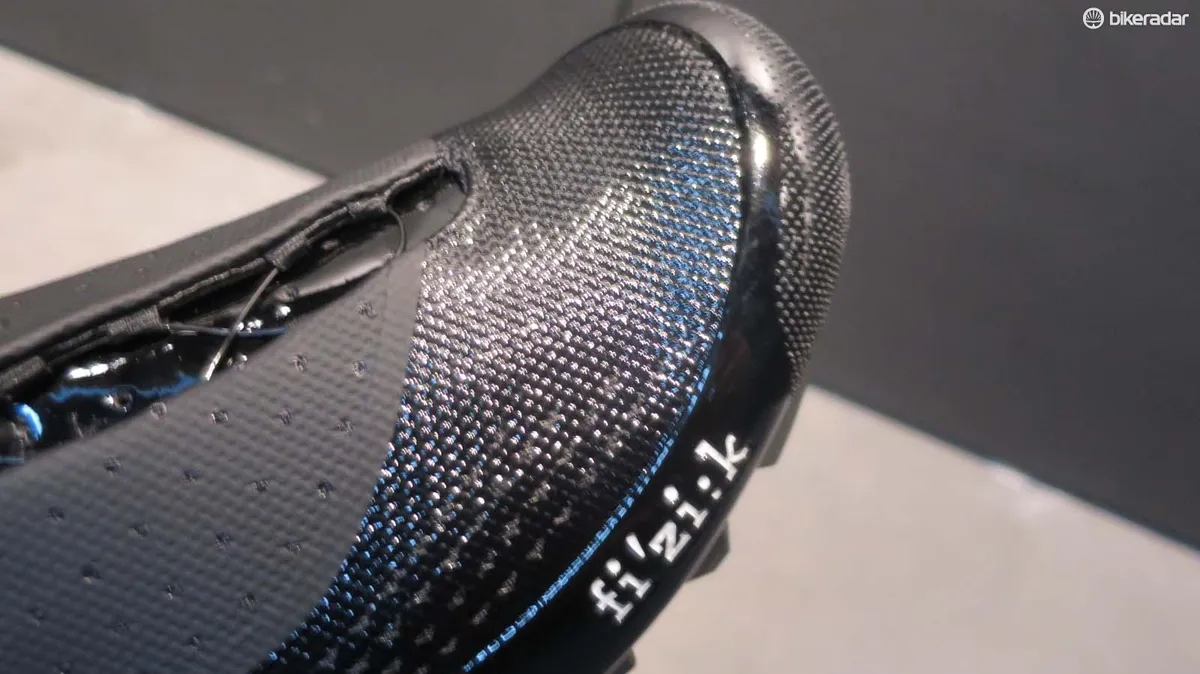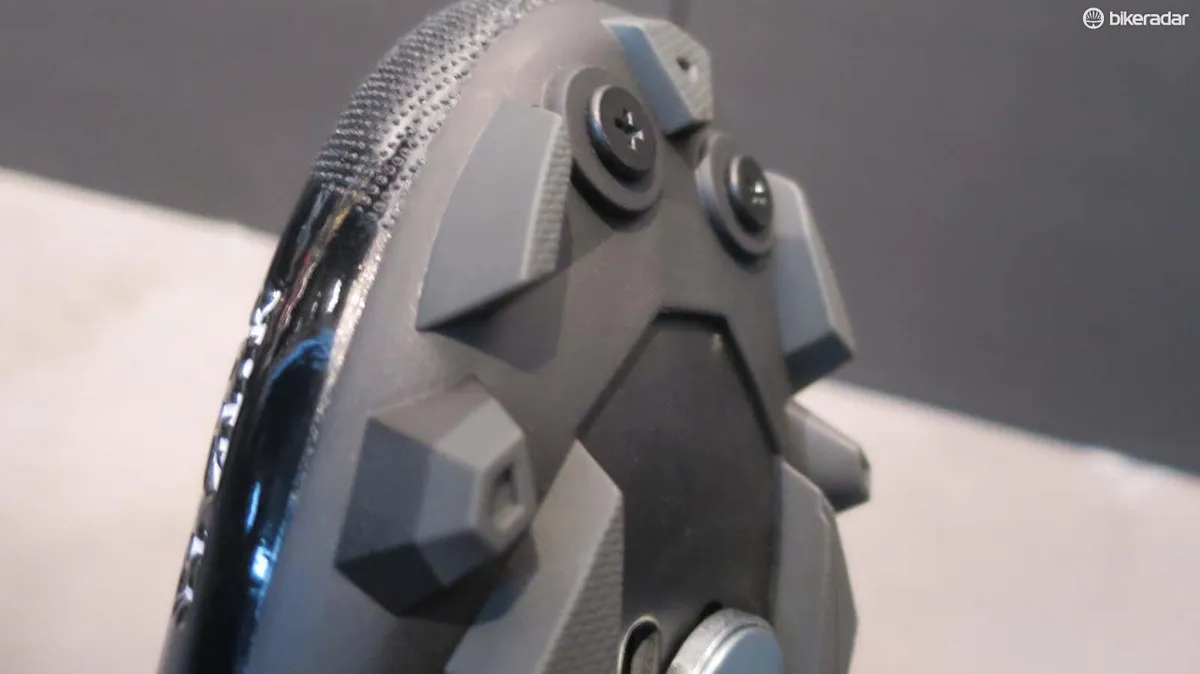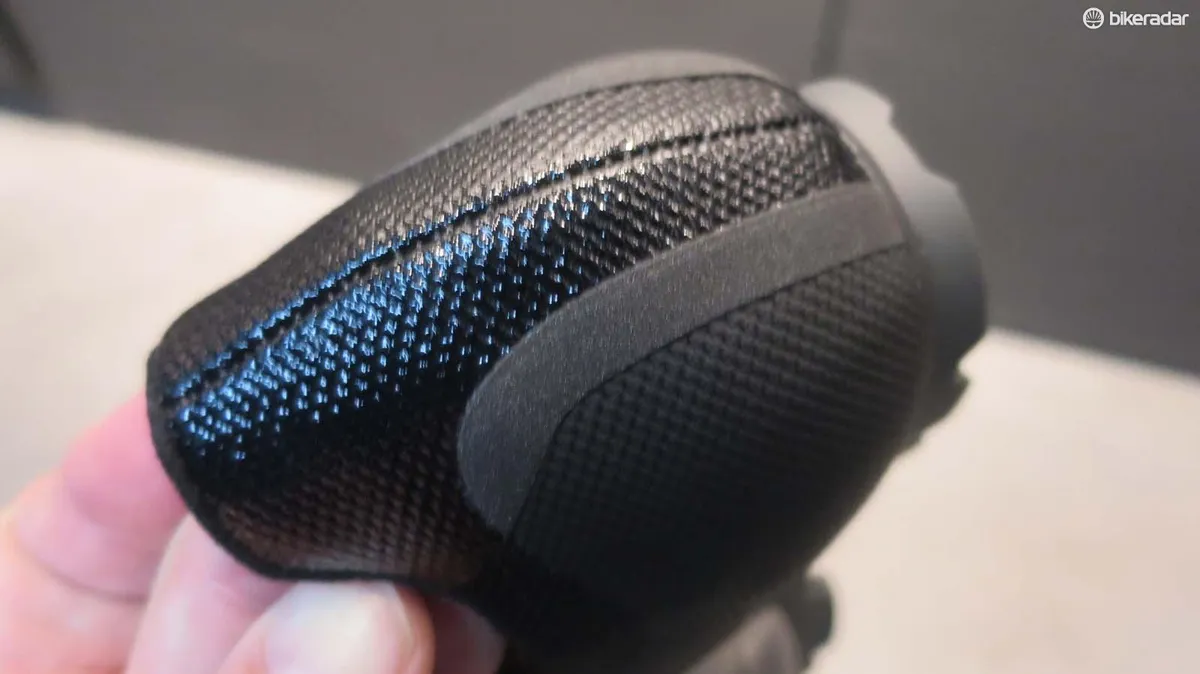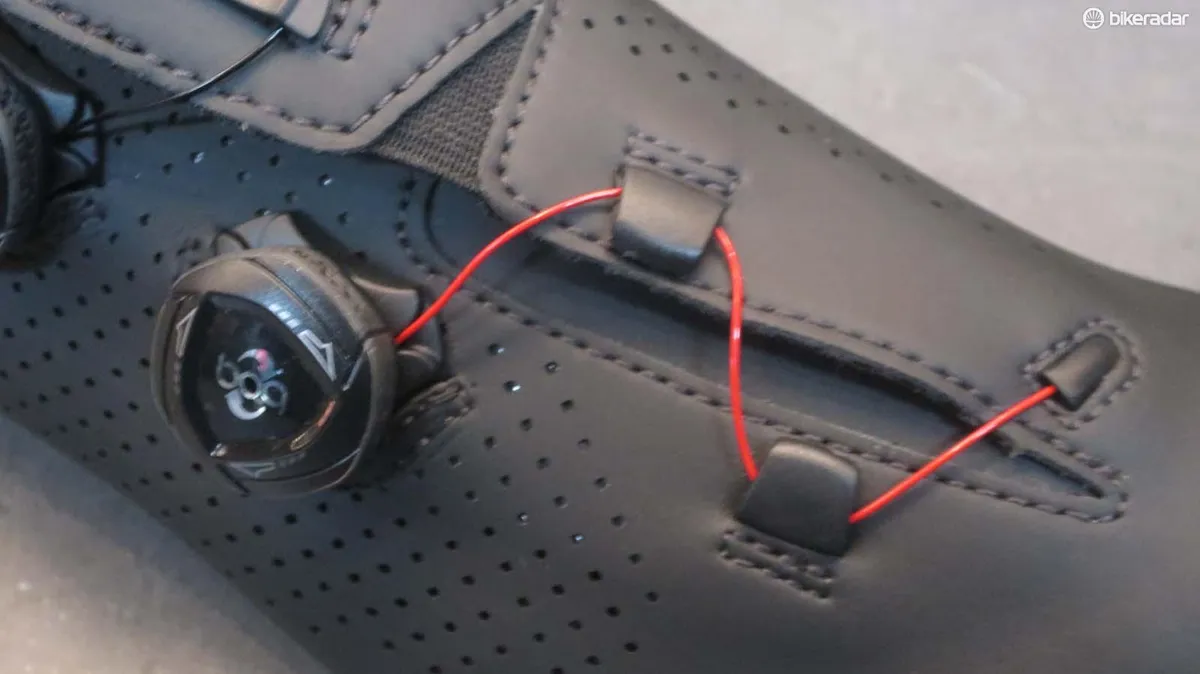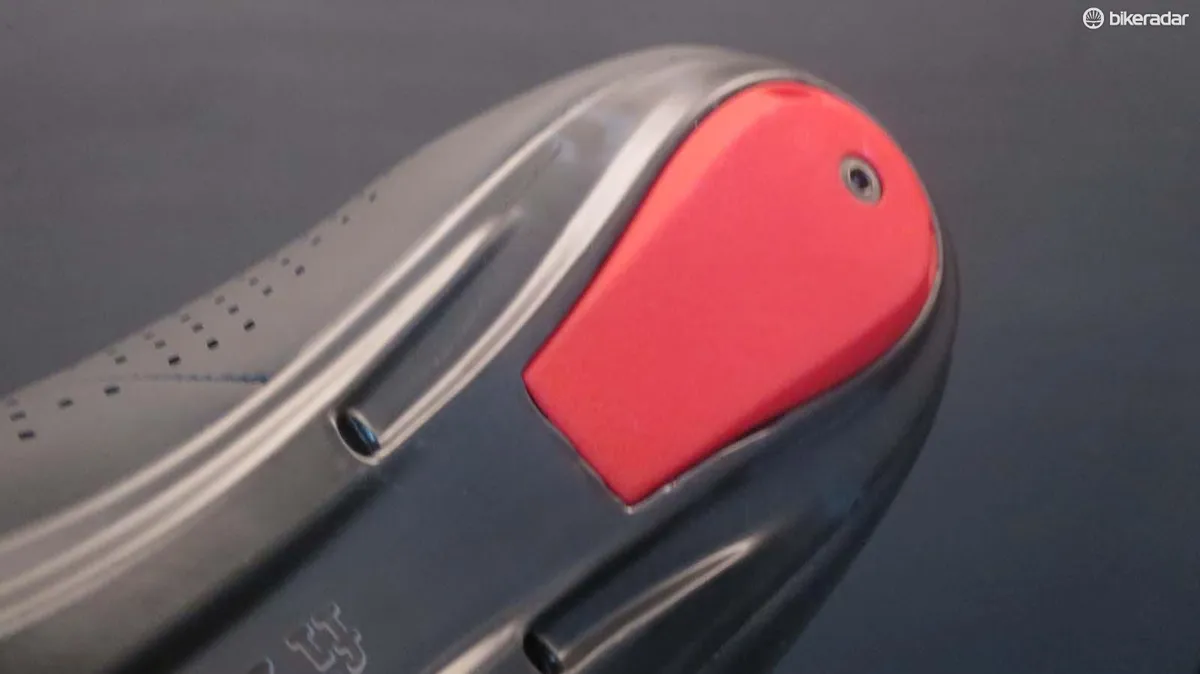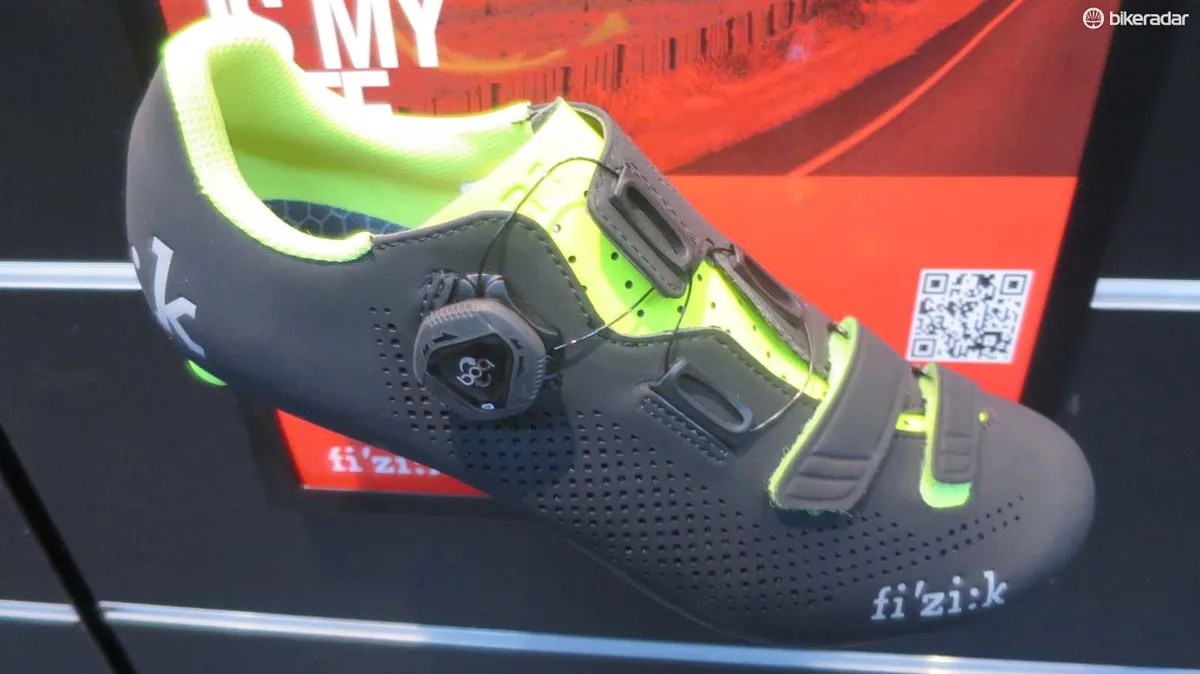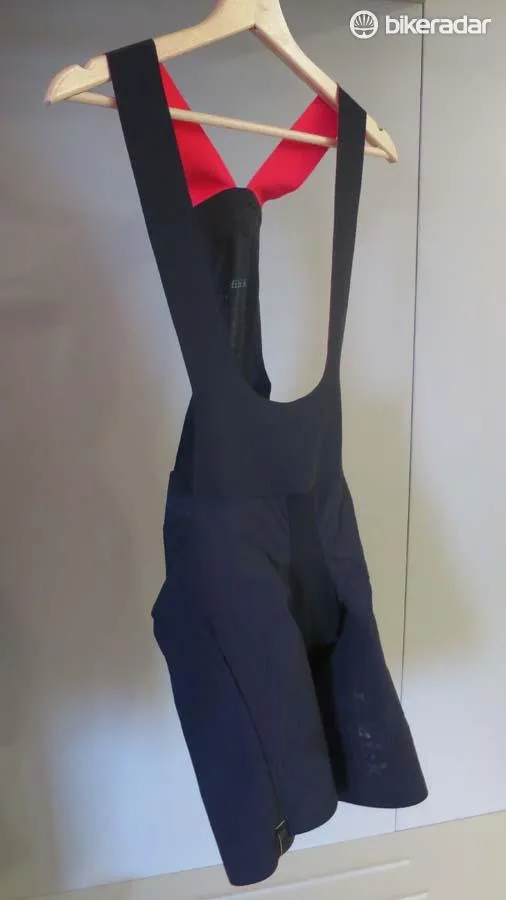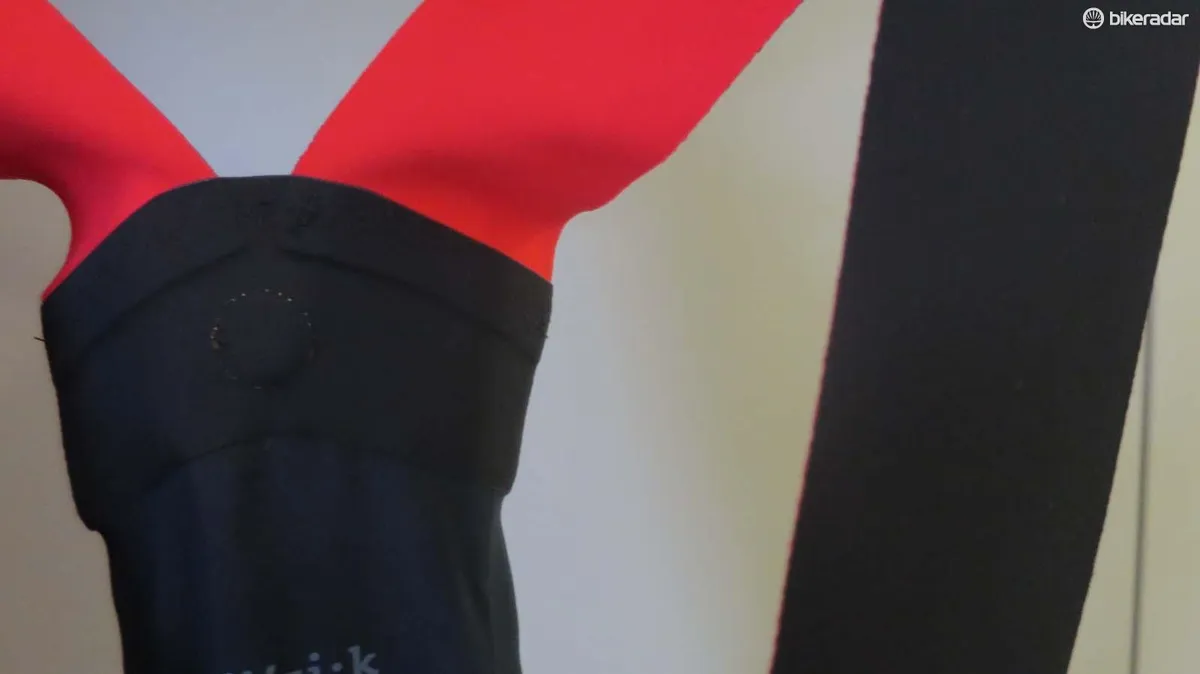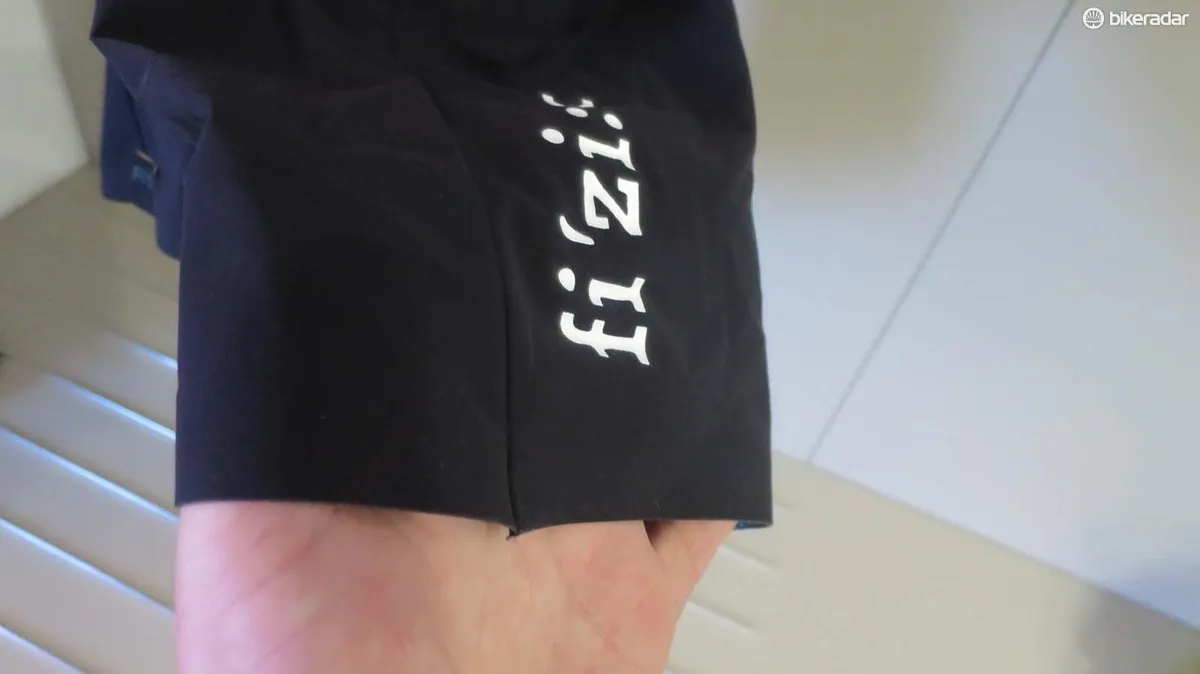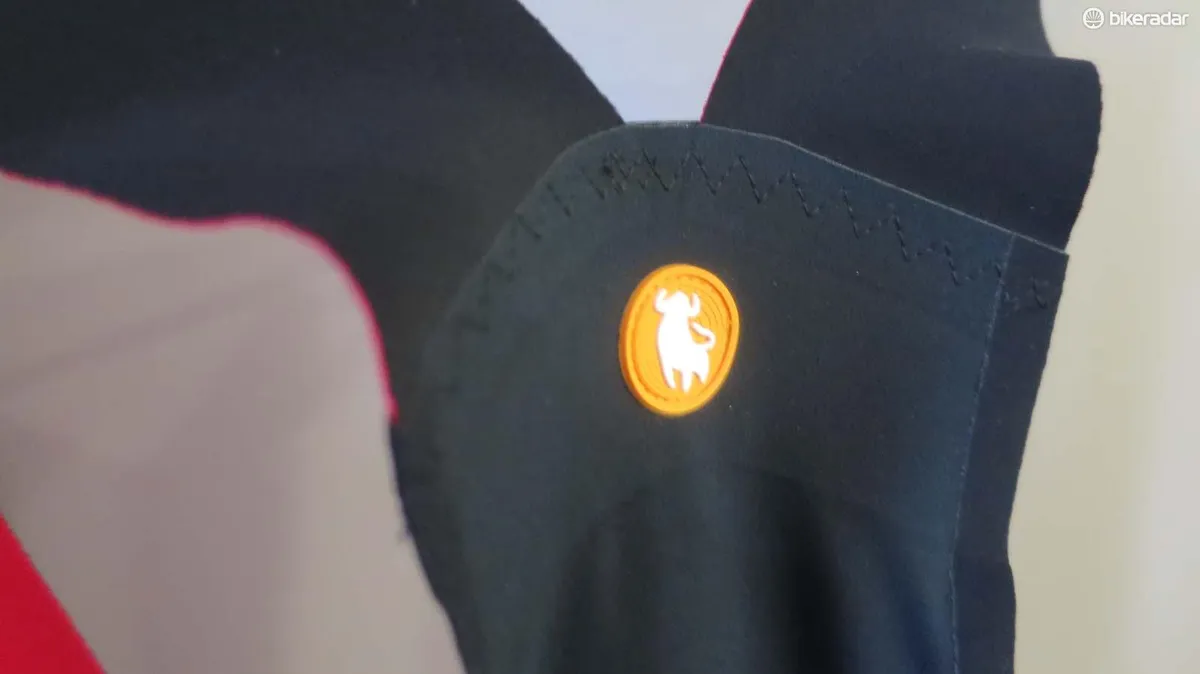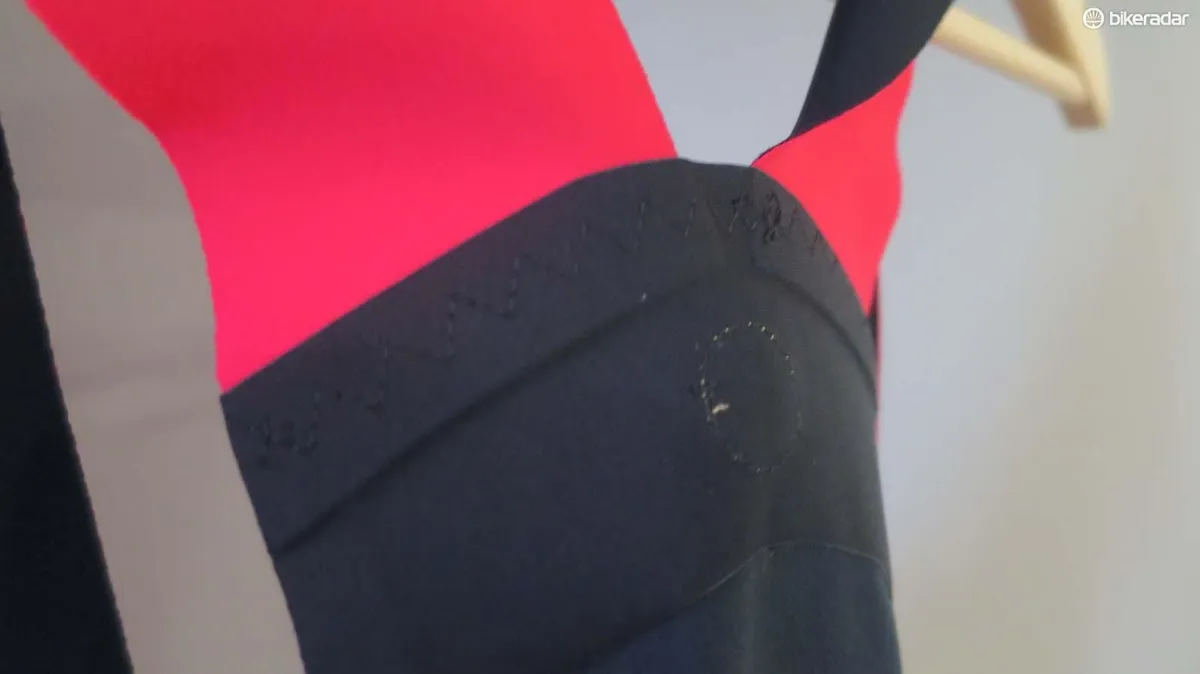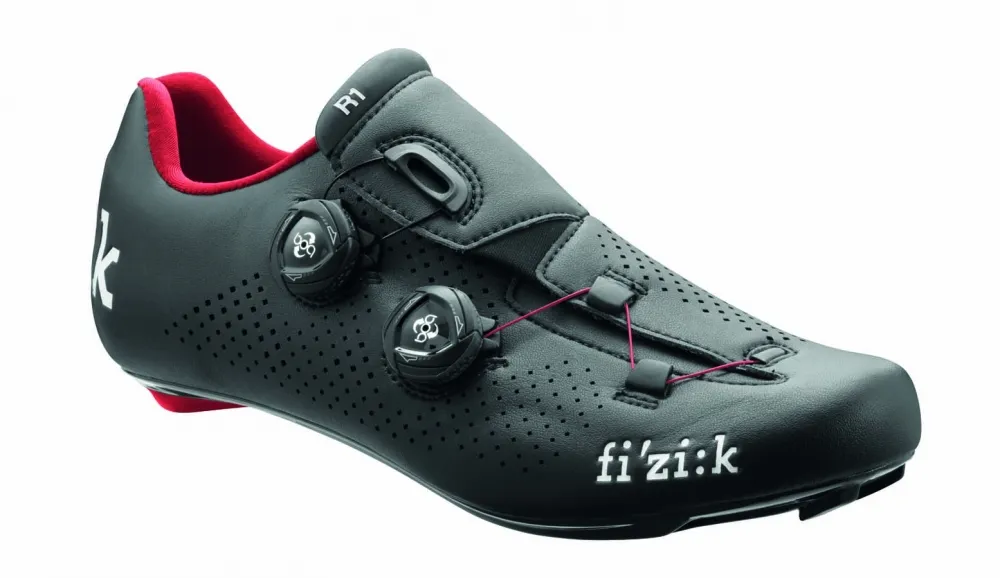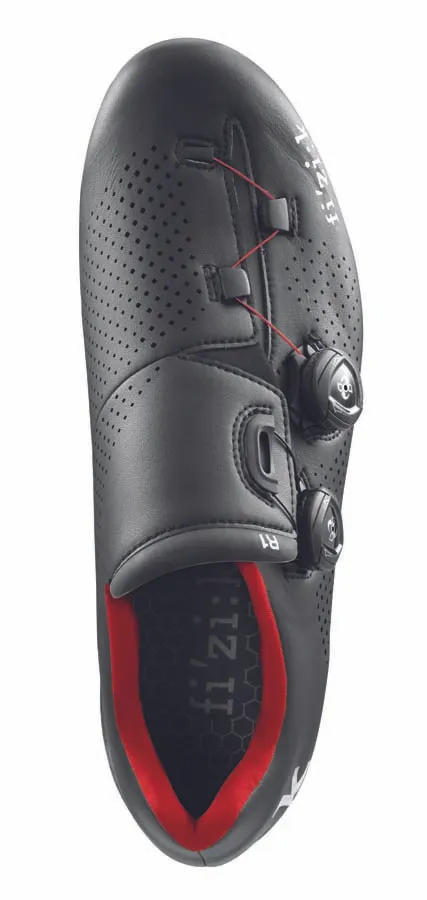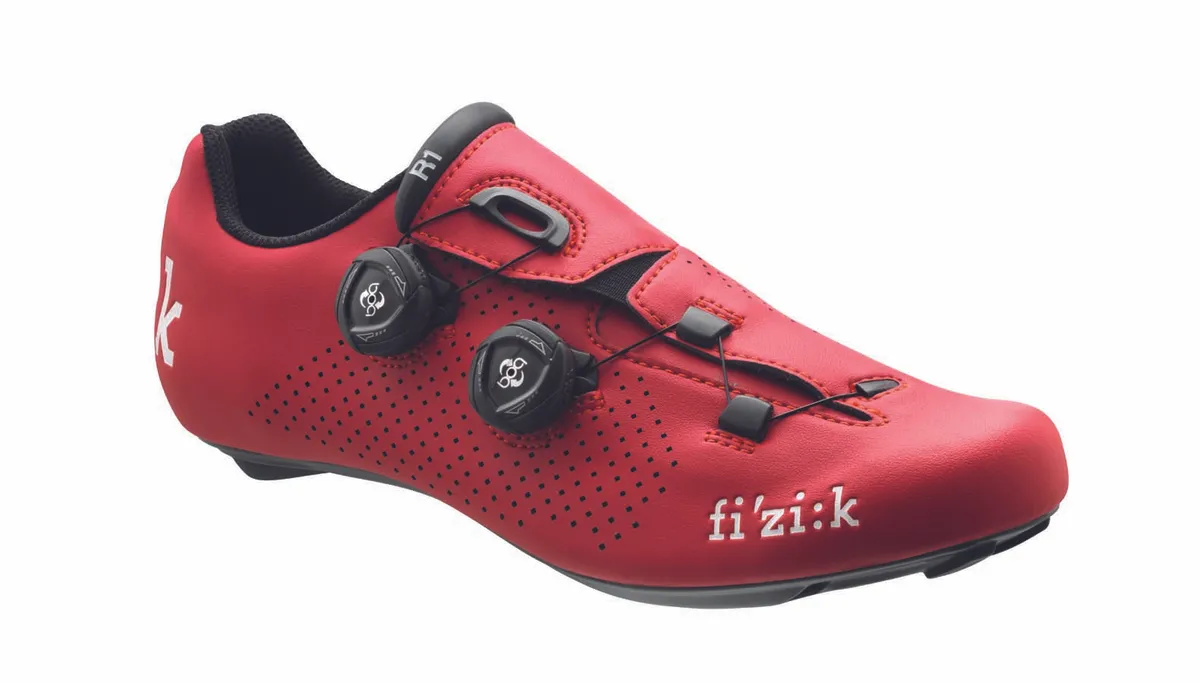Introduced back in 2009 the Spine Concept was Fizik’s idea to match rider flexibility to saddle shape. Defining riders as Snakes, Chameleons or Bulls: Snakes being the most flexible and Bulls the least. Now after seven years this has evolved into the Spine Concept Evo. For the last three years Professor Roger Kram at the University of Boulder, Colorado has worked with Fizik investigating and studying the original Spine Concept and looking to see where else Fizik can move the system forward.
Fizik tells us that flexibility and pelvic rotation are inextricably linked to saddle comfort: high flexibility leads to low pelvic rotation, and less flexibility leads to high pelvic rotation. Fizik has found that body weight and power transfer has a significant effect on which saddle you should choose, and has introduced two sizes of saddle: standard and large. In the Arione that means a 130mm and a 142mm version, Aliante gets 142mm and 152mm, and the Antares 140mm and 152mm.
The experiments consisted of a study on power and how forces on the stem, bottom bracket and saddle are affected by power
The research showed for example, a 75kg rider with a power output of 2w/kg at 28km/h leads to 29kg (39%) of their weight exerted on the saddle. But the same weight of rider outputting only 1w/kg and an average speed of 20kmh actually puts significantly more weight on the saddle — 32kg (43%). For a fast 75kg rider outputting 3.5w/Kg at a speed of 35kph less weight is put on the saddle, just 25kg( 33%).
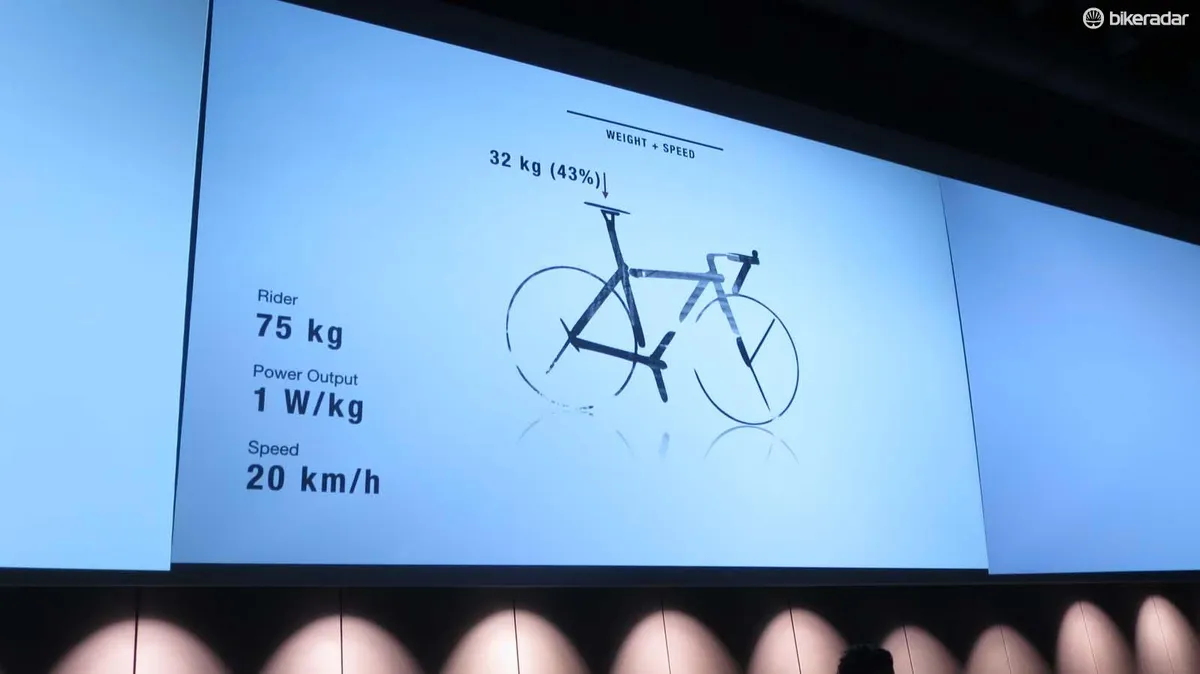
To find your size Fizik came up with an algorithm, and by inputting your weight, average speed on a flat road, and power output the system suggests a saddle size. In theory that’s a good thing, but the question remains, how many riders know their power output? Power analysis, such as power meters, is becoming more readily available, but for most it’s still prohibitively expensive. So has Fizik made a system for the elite (and wealthy) only?
To help with this, Fizik has developed the Spine Concept app to help riders choose a saddle. The app will estimate your power output from weight and speed, and will also measure flexibility. By holding the device loaded with the app to your chest and bending forward the app will recommend saddles from Fizik's range as well as the most suitable size. The app will launch this week and will be available free on iOS and Android devices.
The science behind Fizik Spine Concept
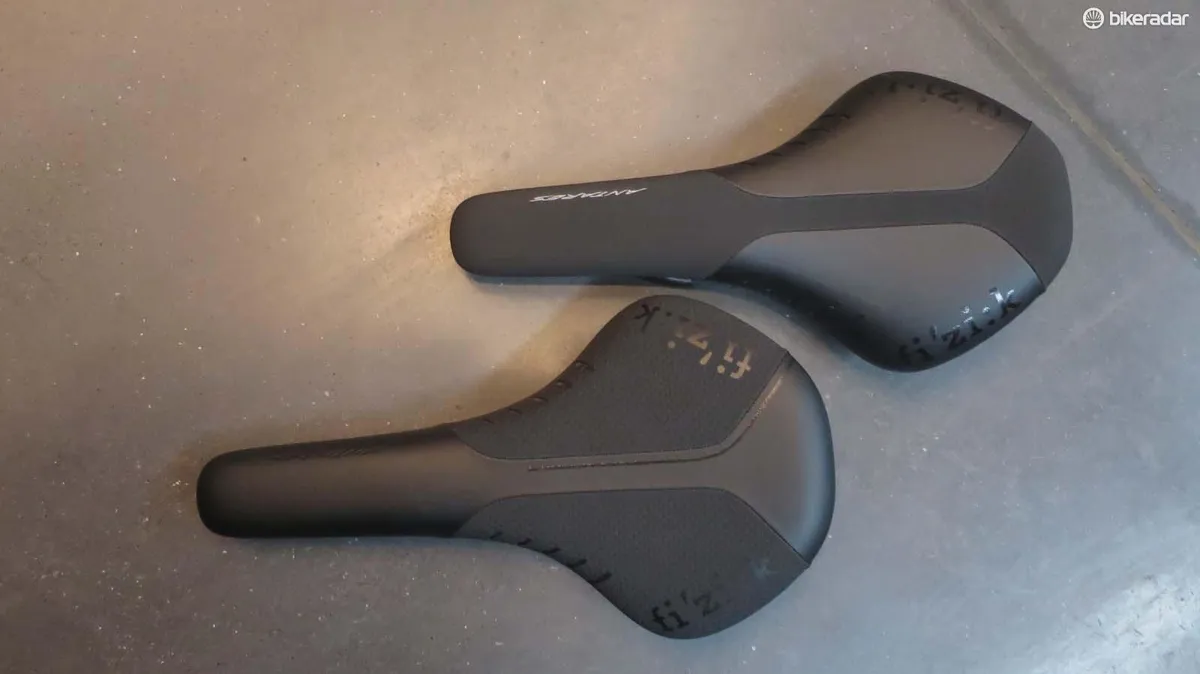
Professor Roger Kram sought to build a system and tools to discover the numbers needed to support rider comfort. Fizik’s Luca Viano explains: "We wanted to find out what most of us [riders] have taken for granted, feeling comfortable on the bike has always been only on feel, we want to quantify that."
The experiments consisted of a study on power and how forces on the stem, bottom bracket and saddle are affected by power. They found that an increase of 1w per kg (between 1 and 4) lead to a decrease in saddle forces as power increased — and surprisingly the same happens on the stem forces, with only the forces on the BB increasing. When cadence increases from 60rpm to 110rpm you see an increase in saddle forces and stem forces with the BB forces reducing.
From this starting point they then went on to study hand positions, rider position and perform a saddle study (where riders actually sit on the saddle). This found that even when moving the saddle for and aft by 3cm, the centre of pressure stays in exactly the same place. Luca explains that we automatically sit in the same place and "that means that riders can compromise their geometry and position to sit in the same place on the saddle."
So are individuals able to discern differences between saddles during bicycle riding? And are there individual anatomical measures that can predict saddle comfort? This is the question Fizik put to Professor Kram and his team, and this lead to a further slew of studies.
In the first study, out of more than 200 male riders only seven riders could define the differences in a blind test (between flat, curved, semi curved). Even more surprisingly, few could tell if a saddle had a cutout or not. For more on this see our report from Professor Kram’s studies, Half of riders can't differentiate between saddles in blind test.
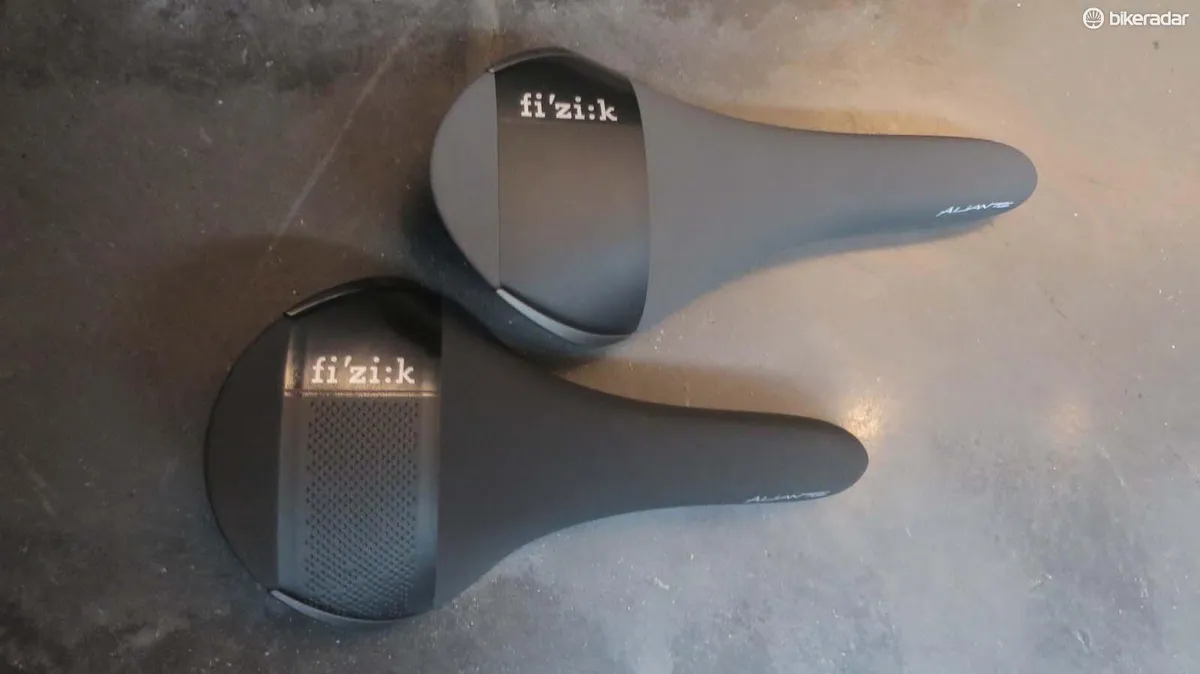
The second blind study tested riders on saddle shape. Over various rides (+2hrs) the saddles were switched and riders were asked to rate the saddle after every ride, the results showed that the more flexible riders always rated highly for the flat saddle, and less flexible riders rated the curved.
They studied the anatomy of the riders too, and found that some with narrow sit bones chose the wider saddle, and some with larger sit bone widths the narrower, which is counter to popular saddle choice systems from rival brands. Luca is quick to add though, "Sit bone width is important, especially when you're looking at saddles for more upright urban bikes. We aren’t dismissing anyone else’s fitting systems, it’s just our research showed that pressure [weight] distribution is in our findings more important. Especially as the sit bone pressure point can change depending on your position and your hip's rotation."
So this is where Fizik has chosen to take its saddle design, they believe pressure or weight on the saddle is the defining factor and not sit bone width. This is a bold statement when you compare it to sizing systems from Specialized, ProLogo, SQ labs, and even stable mates Selle Royal.
Luca rounds up: "From this study it has meant we have been able to build a power matrix, with two equations to work from the numbers we now have give us a huge reference that makes it easier to find the correct saddle. For the maths geeks amongst you here’s those equations that provide the data for the matrix in full…
- % Body weight on saddle = -0.0324X + 0.4555 Where X = Power in W/KG
And
- pW = [[P x(p/100 + a) + (KS x V92 )] x v] x g
Where
- P = riders weight + bike weight
- p = Climbing grade (fixed to 0)
- a = Coefficient of friction (fixed to 0,01)
- KS = Drag coefficient (fixed to 0.021)
- v = Speed in m/s
- g = gravitational acceleration
We are certainly glad that Fizik and the team at the University of Boulder have done all the hard work for us. You can try the Spine Concept selector tools out at www.fizik.com
Fizik's Link shorts
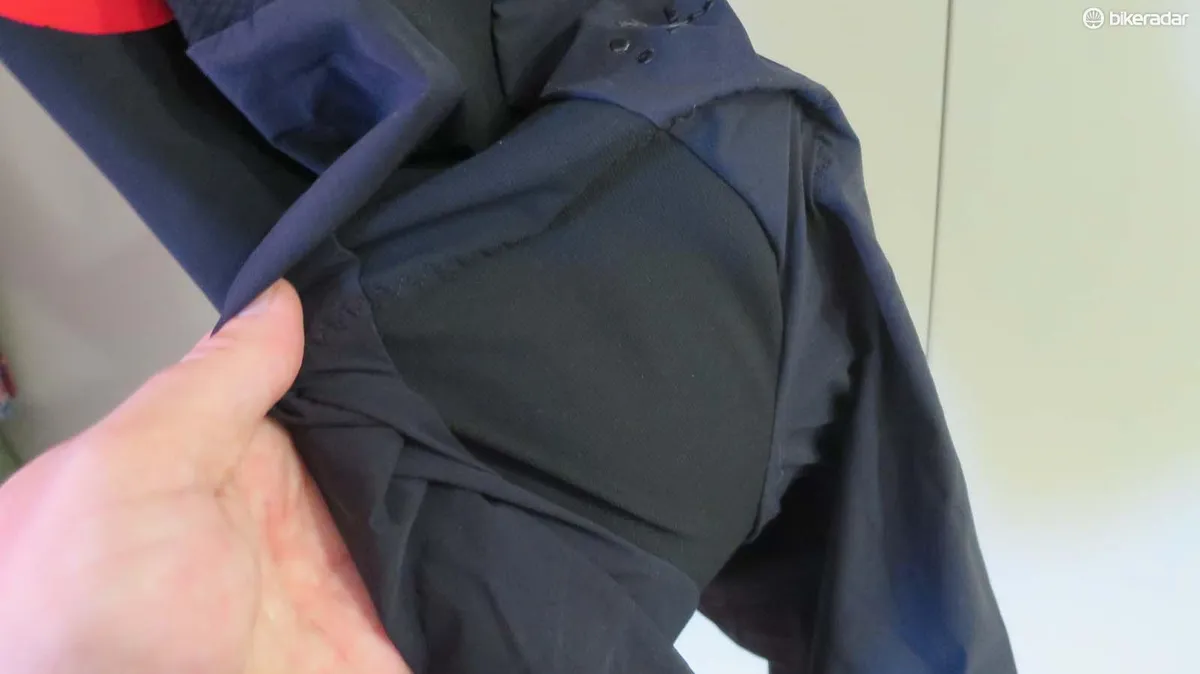
It seems like a natural progression from Fizik making saddles suited to the way in which you ride to making a short to match. The question Fizik asked themselves was "do we need another clothing brand?" The short answer was no, so Fizik isn’t looking to move into apparel but they still felt that a better ‘system’ is needed and a better ‘link’ between saddle and rider. Fizik’s Alberto Fonte tells us that "Fizik believes that Link is the best interface to provide cutting-edge performance, the three most important things are fit, saddle, and shorts when it comes to comfort and performance on the bike."
Luca Viano continues: "We partnered with Elastic Interface to work on our inserts; the pads are designed for each type. For each type of rider its not just a case of changing padding, the different types of riders have very different styles of riding, very different movements too." Take a snake rider, they have a 3D shaped pad that’s ultra close fitting and very much formed to the rider with high-density padding, the suspenders maintain the short position and offer a medium level of lumbar support. The pads feature a seamless molded cover that’s 4mm thick with a 30kg/m3 density and a preformed perforated foam insert that’s 14mm thick with a 120kg/m3 density, molded to an outer ring that’s 10mm thick with a 60kg/m3 (m cubed) 10mm thick section, and covered with a perforated liner.
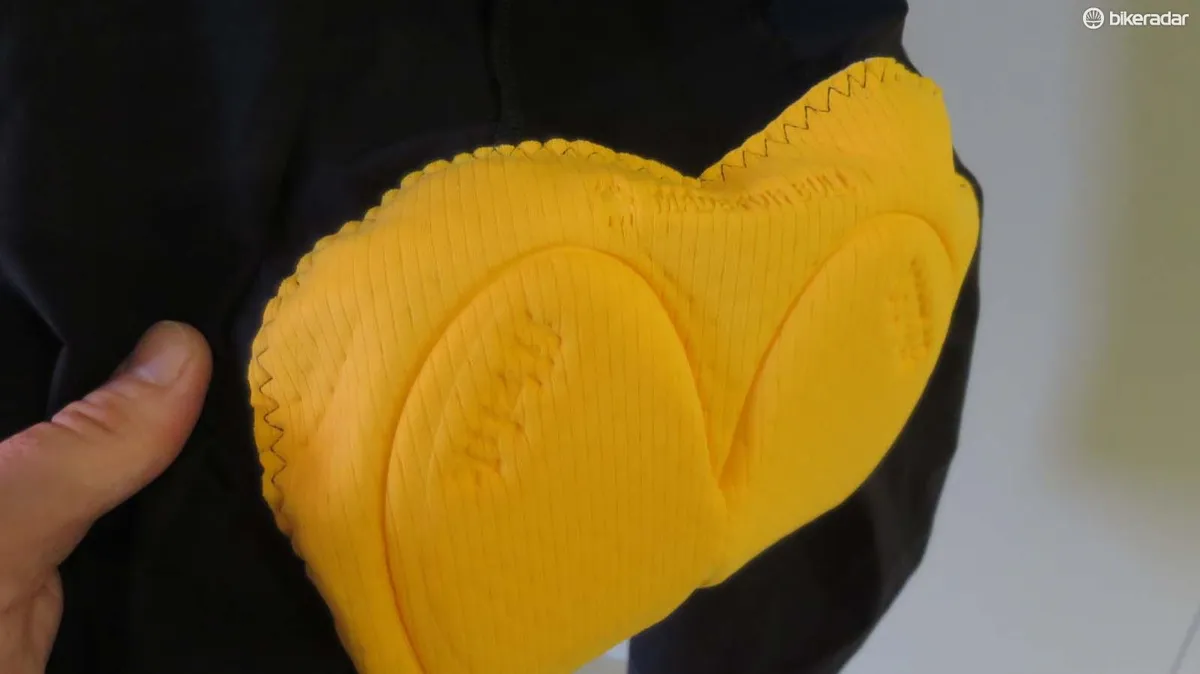
For the Bull rider it’s an insert that’s multi-density and a sandwiched pad that's 6mm+4mm and is shaped to match that of the Aliante saddle. The suspenders are more relaxed with high levels of lumbar support at the back. With a super breathable cover made from 60kg/m3 density padding this is sandwiched underneath with a triple density foam that contains 60/80/120kg/m3 padding, again with a perforated liner.
For Chameleon riders its ultra-high-density foam. In the 2D insert (shaped to match the Antares) the multi-density insert mixes 80 and 120 densities and these are sandwiched in a 6 and 4mm mix. The cover is 60kg/m3 and uses the same super-breathable make up as the Bull. A perforated central foam channel also features and uses an 8mm thick, 80kg/m3 4mm thick fabric. This central section is key to giving the Chameleon pad a twinflex action to the shaping (like Fizik's saddles have on their wings) so the pad remains stable even when pedaling hard.
High support for lumbar and back, ergonomic construction, robust fit, less pressure on the legs/genitals (thanks), knit fabrics and a new pattern system for the crotch area (patent pending) eliminates any seams running through the centre. Each shape is available in two levels, the super high-end R1 level and the Pro level R3; both are at the pricier end of the market.
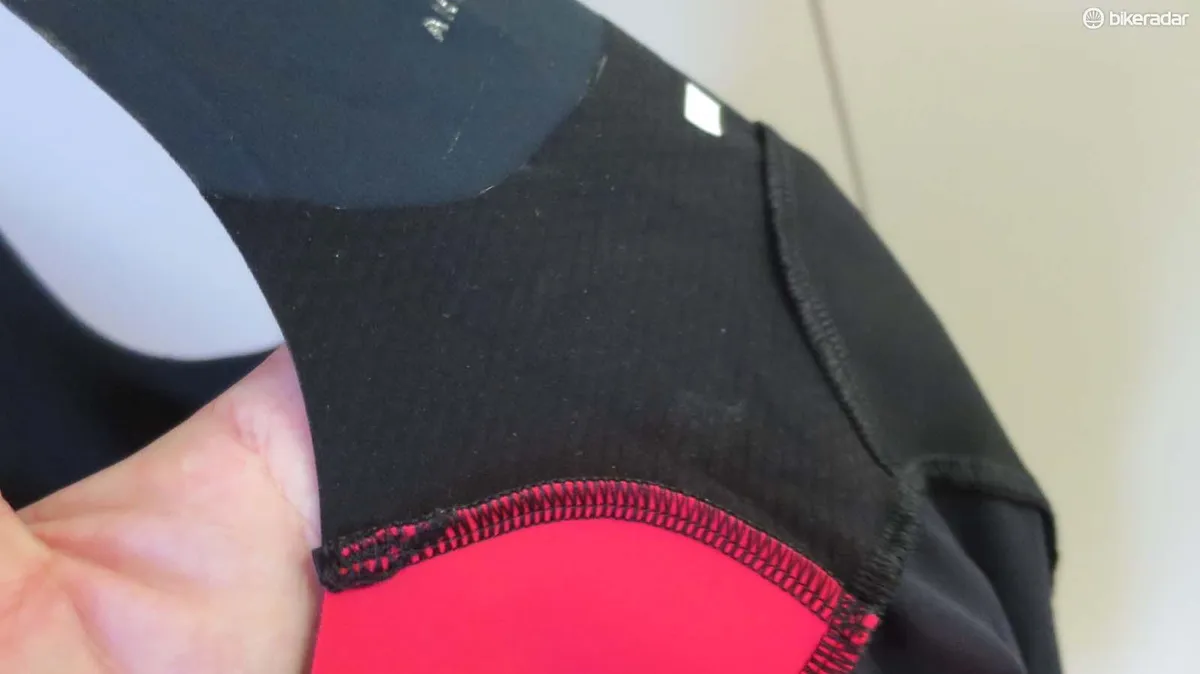
The R1 level shorts are priced at £229.99, €275, US$300, and use a lightweight fabric, are breathable 3D moulded and contain seamless padding by Elastic Interface. The woven fabric absorbs minimum water and dries fast (20% quicker than traditional fabrics) and is lighter weight whilst maintaining equal resistance, more durability and less peeling.
The R3 level also uses a lightweight fabric and a breathable, top of the range padding from Elastic Interface. Fizik describes the R3 as performance fit with an ergo centric pattern that supports the muscles whilst maximising freedom of movement. The R3 level short is priced at £149.99, €180, US$199 and includes specific polyamide and elastane non-woven fabrics, with a reduced amount of seams to improve comfort and durability.
Shoe improvements too
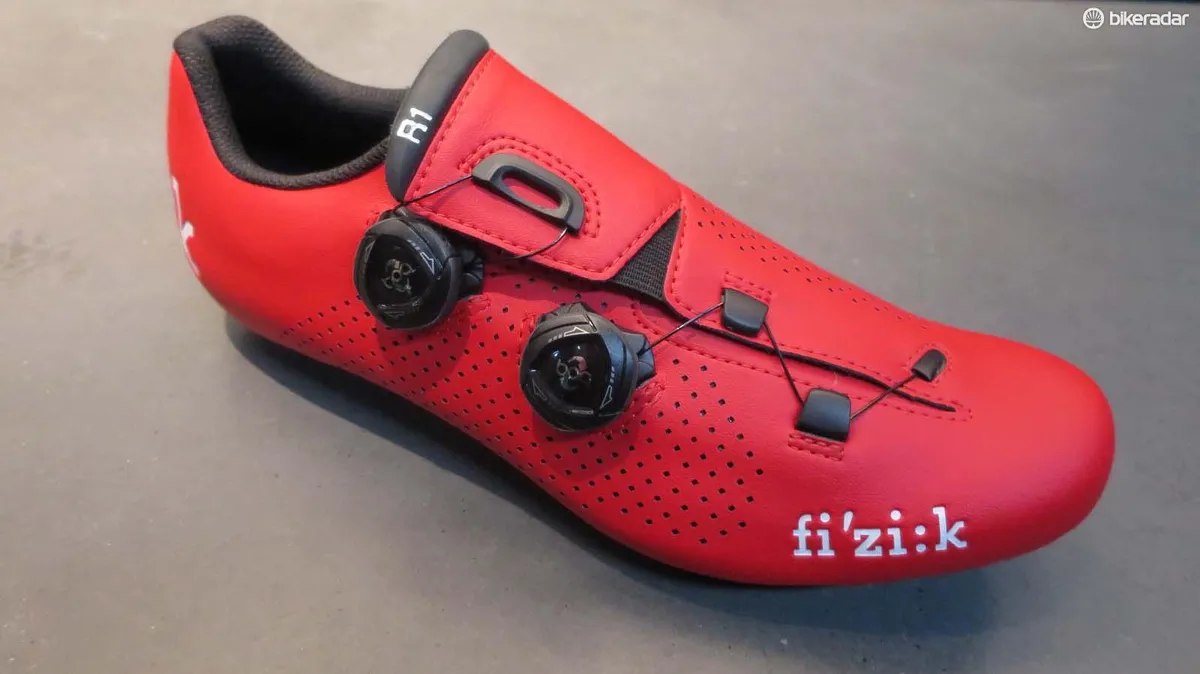
The range topping R1 has been slightly tweaked from its debut in 2015. While it still retains all of the features of the R1B, with its twin BOA design where the higher BOA dial controls retention, and its single wire pulling a large wrap-over section across the foot, the second dial’s wire zigzags across the forefoot and reduces the volume of the front of the shoe — creating a sock-like fit.
Fizik claims this system offers twice as much adjustment as traditional twin-dial shoes. The changes have introduced more breathability with more laser cut holes running throughout the shoes flanks. The R1B is still available in black and white colourways, but we did get to see some interesting additions like a gorgeous full blood-red version as well as a black/red option.

The R3B is a new XC/'cross shoe that tips the scales at a svelte 350g (good for a shoe of this type) and the new design combines a one-piece upper with a single BOA dial. The sole is a lightweight unidirectional carbon fibre base onto which TPU grips and studs are bonded. The upper is constructed with a lightweight mesh and polyurethane injected sections to provide water resistance on the toe box, and thicker sections around the toe and fore foot for protection and abrasion resistance. The M3B is priced at €250 and available now.
